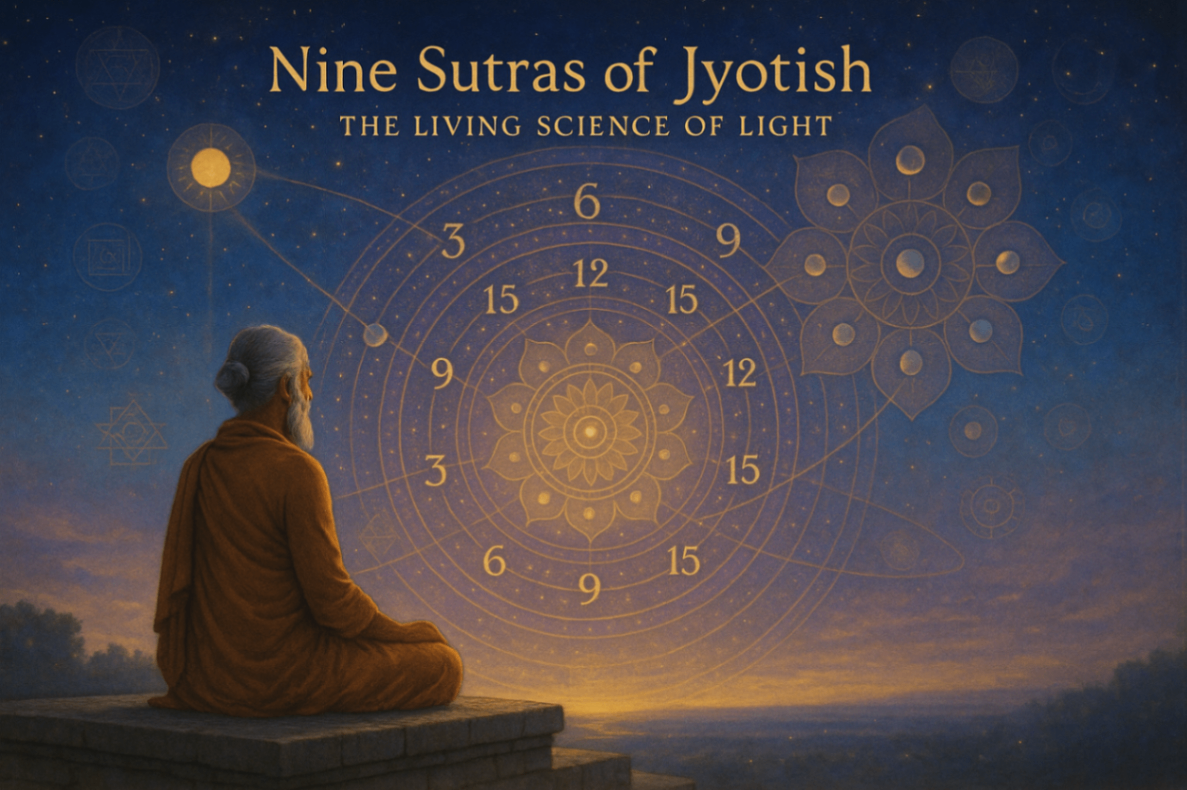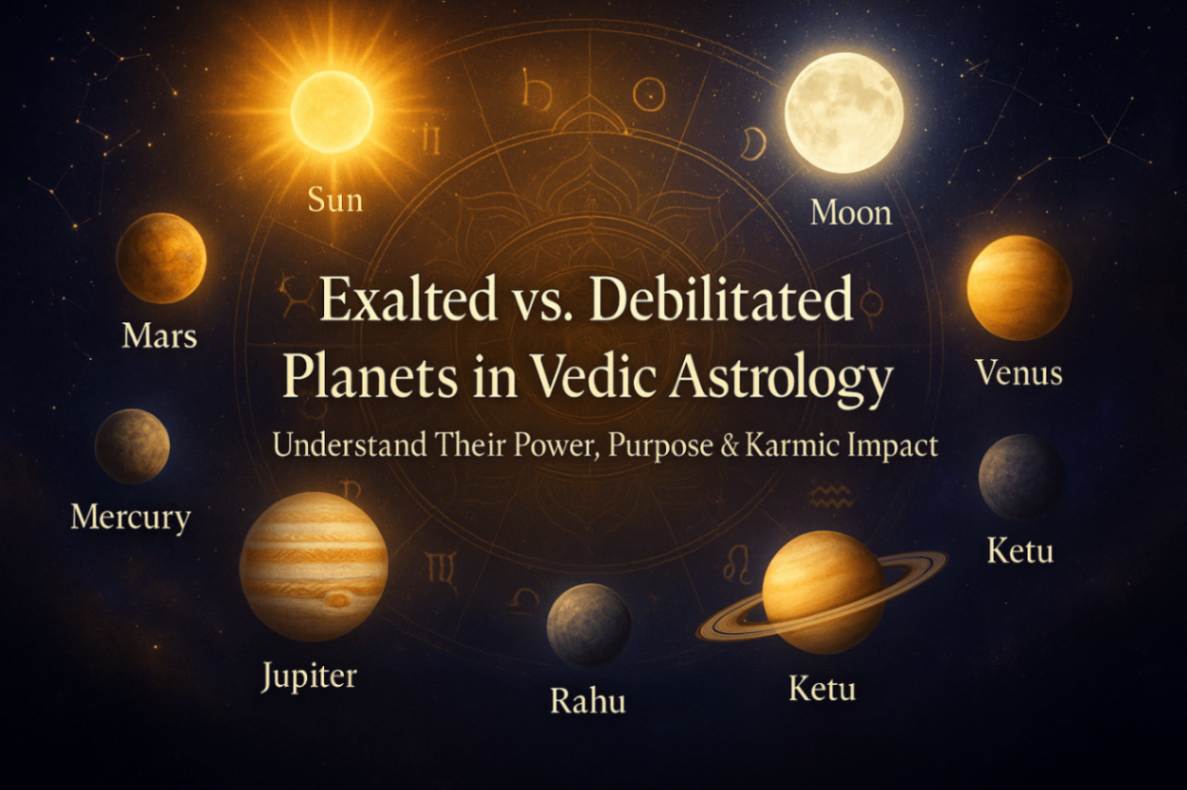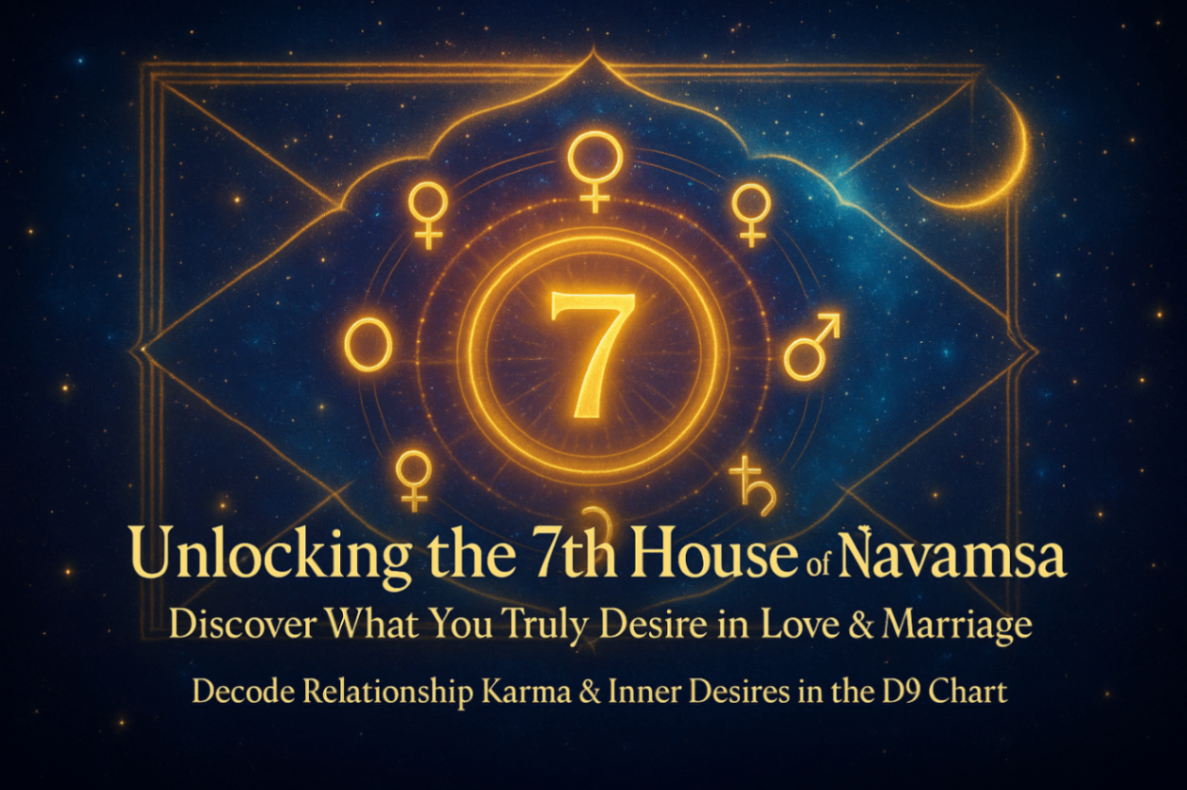Introduction
In Vedic astrology, Rahu and Ketu – Aspects hold a mysterious but powerful role. These two shadow planets, also known as lunar nodes, are not physical bodies but mathematical points. Yet, their impact is deeply karmic and life-changing.
Unlike other planets, Rahu and Ketu do not rule any sign directly. Instead, they function as karmic agents, amplifying hidden desires, past-life debts, and spiritual lessons. When their aspects fall on certain houses, they create unique influences that shape a person’s journey.
Nature of Rahu and Ketu
Rahu represents ambition, illusion, material success, and worldly attachments. It magnifies desires and can make a person restless or obsessive.
Ketu stands for detachment, spirituality, moksha, and past-life karmas. It brings lessons of loss, surrender, and higher wisdom.
Together, they form a karmic axis in every horoscope. Understanding their aspects is crucial for decoding life’s struggles and breakthroughs.
Rahu and Ketu Aspects Explained
Unlike the seven visible planets, Rahu and Ketu have unique aspect patterns:
Rahu aspects the 5th, 7th, and 9th houses from its position.
Ketu aspects the 5th, 7th, and 9th houses as well.
Some traditions and Nadi texts also recognize the 10th aspect of Rahu, which has been found effective in predicting career and social standing.
These aspects do not behave in a straightforward way. Instead, they distort or intensify the house they influence, depending on dignity, conjunctions, and dashas.
Rahu’s Aspects and Their Influence
1. Rahu’s 5th Aspect
Brings sudden changes in creativity, children, and education.
Can give foreign education, unconventional learning, or unexpected child-related issues.
Sometimes creates a restless or rebellious attitude in matters of love and romance.
2. Rahu’s 7th Aspect
Strong impact on relationships and partnerships.
Can bring foreign or unconventional spouses.
May create instability or hidden motives in marriage.
At higher levels, it pushes the person to break free from traditional expectations.
3. Rahu’s 9th Aspect
Affects spirituality, higher learning, and father’s influence.
Can cause conflicts with teachers, gurus, or belief systems.
Sometimes makes a person reject traditional religion but explore new philosophies.
4. Rahu’s 10th Aspect (Nadi Tradition)
Directly affects career, recognition, and social reputation.
Can create ups and downs in profession, unexpected job changes, or public controversies.
When supported by benefics, it brings sudden fame or rise in career.
If afflicted, it can cause debt, instability, or professional downfall.
Ketu’s Aspects and Their Influence
1. Ketu’s 5th Aspect
Creates detachment in love affairs, children, and education.
A person may feel uninterested in worldly pleasures.
Can also indicate spiritual or psychic children.
2. Ketu’s 7th Aspect
Brings karmic challenges in marriage and partnerships.
Often delays marriage or creates a sense of dissatisfaction.
In higher spiritual charts, it can indicate a partner who becomes a guide.
3. Ketu’s 9th Aspect
Weakens traditional faith, father’s influence, and dharma.
May cause struggles with higher education or faith-related conflicts.
Spiritually, it can cut ties with dogma and push towards moksha.
Rahu and Ketu – Aspects in Divisional Charts
Astrologers often check Dwadashamsha (D12) for parents, Saptamsha (D7) for children, and Navamsa (D9) for marriage. The aspects of Rahu and Ketu in these divisional charts often reveal subtle truths:
Rahu’s aspect in D12 can show debts or struggles in the father’s or mother’s life.
Ketu’s aspect in D7 may show karmic challenges with children.
In D9, their aspects often indicate fated patterns in relationships.
Practical Examples of Rahu and Ketu Aspects
Rahu aspecting the 9th house: A person may study abroad but face struggles in adjusting with cultural values.
Ketu aspecting the 4th house: The native may lose mother early or feel emotionally detached from home.
Rahu’s 10th aspect on the 11th house: Wealth comes but with debts or unconventional means.
Ketu’s 7th aspect on the 1st house: Person feels detached from self-identity and seeks spiritual growth.
Karmic Lessons of Their Aspects
The aspects of Rahu and Ketu are not punishments but lessons for soul growth.
Rahu’s aspects push us to explore worldly experiences, even through illusions.
Ketu’s aspects remind us that nothing lasts forever and that freedom lies in detachment.
Together, they teach balance—between desire and renunciation, materialism and spirituality.
Remedies for Rahu and Ketu Aspects
Since their aspects can create turbulence, remedies are essential. Some traditional Vedic remedies include:
For Rahu:
Chant “Om Rahave Namah” 108 times daily.
Donate black sesame seeds or blankets on Saturdays.
Worship Goddess Durga for clarity and strength.
For Ketu:
Chant “Om Ketave Namah” 108 times daily.
Donate coconuts or dogs’ food on Tuesdays.
Worship Lord Ganesha to overcome karmic obstacles.
These remedies help balance their karmic influence and reduce negative effects.
Key Takeaways
Rahu and Ketu – Aspects are unique because they distort, intensify, and karmically influence houses.
Rahu’s 10th aspect has a powerful role in shaping career and public life.
Ketu’s aspects create detachment, often forcing spiritual evolution.
Their effects must always be studied along with dashas, nakshatras, and divisional charts.
Remedies help channel their energies constructively.
Conclusion
The study of Rahu and Ketu – Aspects reveals how deeply they shape our destiny. While Rahu drives us into the material world, Ketu pulls us back towards spirituality. Their aspects are not to be feared but understood as karmic signposts guiding us through life’s journey.
With awareness and remedies, their challenging influences can be transformed into powerful opportunities for growth.





































